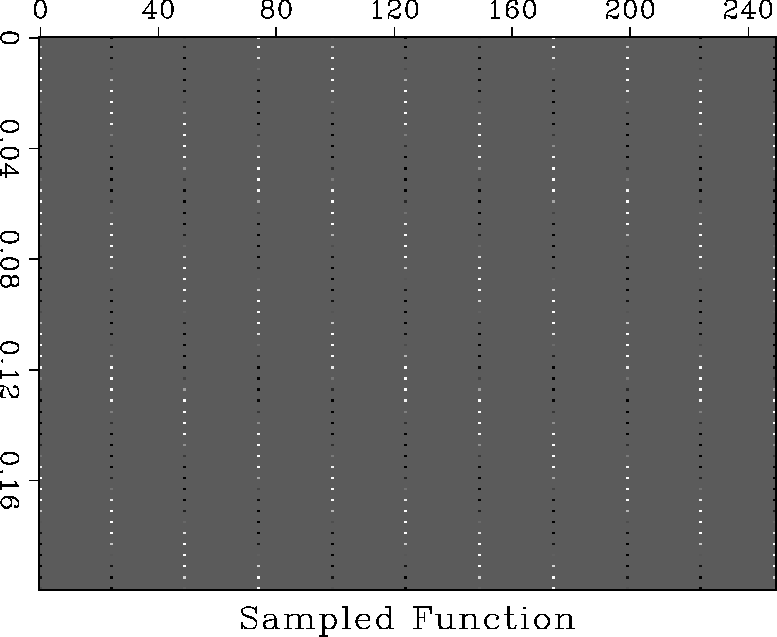To illustrate the various interpolation techniques I will use a 2-D surface
that is a plane wave of frequency, ![]() , and slowness, p,
, and slowness, p,
![]()
![[*]](http://sepwww.stanford.edu/latex2html/cross_ref_motif.gif) for a
frequency of 20Hz and a slowness of 1/2000
for a
frequency of 20Hz and a slowness of 1/2000  |
If this data is
sampled using typical seismic data sampling rates, 4ms in time and 25m in
space, the data shown in figure ![[*]](http://sepwww.stanford.edu/latex2html/cross_ref_motif.gif) is obtained.
This is the input data to the various interpolation schemes,
is obtained.
This is the input data to the various interpolation schemes,
![]()
 |
In the following examples I consider the case of an integral path on a 2-D surface that is defined by time as a function of space, t(x). The aim of this paper is to obtain the integral along a particular path as the sum over all the traces of the trace scaled by a weighting function which is localized around the intersection of the integration trajectory and each trace, t(xix), with nearest sample point it(ix). The curve integral can then be expressed as a sum over the sampled data points.
